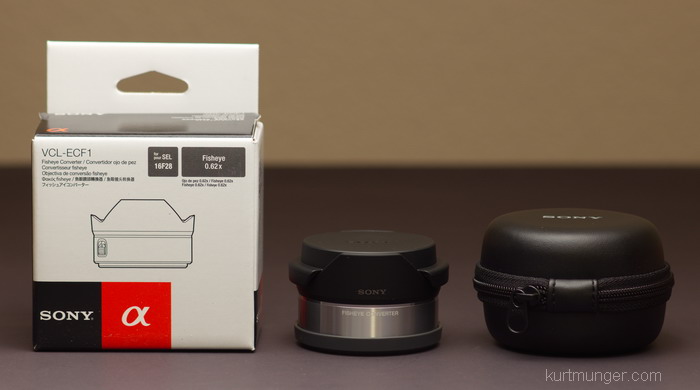 |
| Box and contents |
The Sony NEX-C3 and 16mm lens was used for this review. For a better understanding of terms and methods used in this review, go here. The usual center, mid-section and corner crops are located at the very bottom of the page.
There are two versions of this converter, the VCL-ECF1, for the 16mm lens, and the VCL-ECF2 for both the 16mm and 20mm. The VCL-ECF1 is no longer available from Sony and many other retail outlets. Links in the review are for the updated version.
Introduction.
The made in Japan converter uses the focusing of the host lens, so there are no contacts for communication with the camera, and the EXIF data displays 16/20mm, so the camera doesn’t know it’s mounted.
Fit and finish: the same as other Sony NEX lenses. It seems like Sony is using the same outer ‘aluminum alloy’ material, and the color matches the silver lenses perfectly. The converter comes with a built-in hood, and can’t be removed.
The front and rear covers are non-traditional for Sony lenses; they’re just plastic covers the fit snugly in place.
Light loss when using the converter is approximately a half stop, so the minimum equivalent aperture would be around F/3.2-3.5.
Mounting. The converter mounts to the front of the 16/20mm lens just outside of the filter threads. You can mount it upside down if you want, meaning the same as a bayonet type hood. It doesn’t seem to make any difference in image quality. There is a red dot on the converter that you match up with a red dot on top of the lens, that way you don’t have to worry about mounting it wrong.
Requisite product shots.
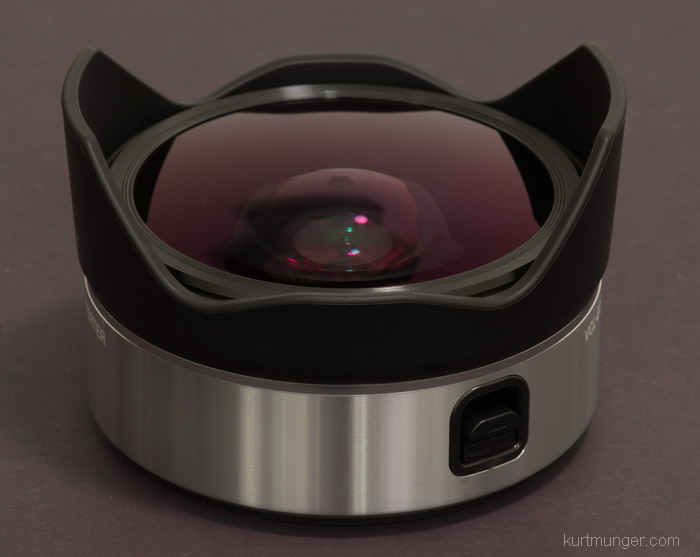 |
| Bulbous front element with built in hood |
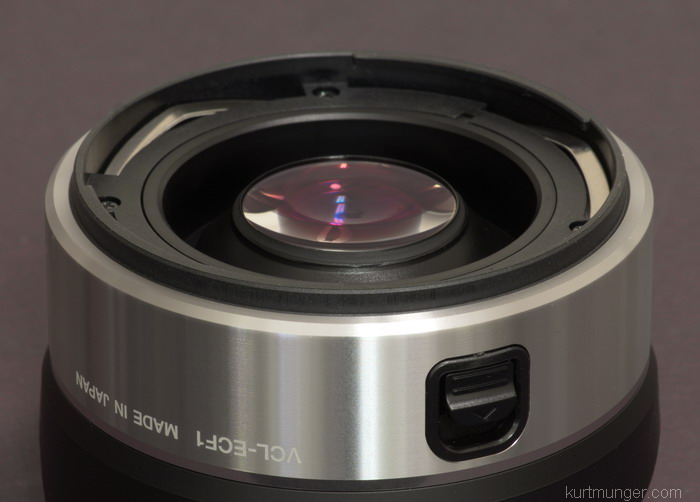 |
| Back side, no contacts |
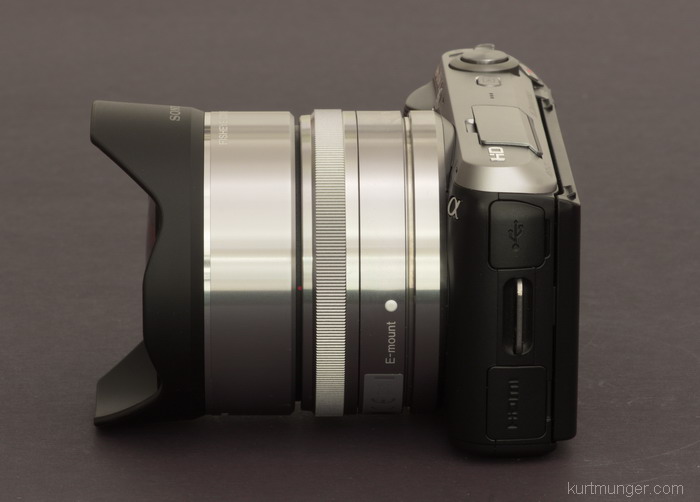 |
| Mounted on Sony NEX-C3 with 16mm pancake lens |
General information and specifications.
|
Lens
|
|
|
Box contents
|
Front cover, rear cover, clam-shell carrying case and users manual.
|
|
Cost
|
Approximately $180
|
|
Build quality
|
Very good
|
|
Additional information
|
Introduced in 2010.
|
Specifications below
|
|
|
Optical configuration
|
4 elements in 4 groups, multi-coated.
|
|
Angle of view
|
180°. 0.62x the host lens, for 16mm lens; 10mm APS-C, 15mm in full frame or 135 film format, and for the 20mm lens; 12.5 APS-C, 18.5mm in full frame (135 film format).
|
|
Aperture
|
N/A
|
|
Full frame and APS-C
|
|
|
Depth of field and focus scales?
|
N/A
|
|
Minimum focus, image plane to subject
|
About 5.25″ (133mm)
|
|
Minimum focus, end of lens barrel to subject
|
About 2″ (50mm) distance is from longest hood protrusion.
|
|
Hard stop at infinity focus?
|
No
|
|
Length changes when focusing?
|
N/A
|
|
Focus ring turns in AF?
|
N/A
|
|
Filter size
|
Will not accept filters.
|
|
Filter ring rotates?
|
No
|
|
Distance encoder?
|
No
|
|
Max magnification
|
About .078x, or 1:13 with 16mm lens.
|
|
Min. F/stop
|
N/A
|
|
Sony teleconverter compatible?
|
No
|
|
Length changes when zooming?
|
N/A
|
|
Dimensions WxL (my measurements)
|
2.6″ x 1.57″ 66mm x 40mm.
|
|
Maximum extended length (my measurements)
|
N/A
|
|
Weight bare (my scale)
|
5.3oz (150g)
|
Optical qualities summary.
Lens flare/ghosting. Fair to good control. I see some small multi-colored ghosts and dots, when the sun is near or inside the image.
Vignetting or light fall-off is not an issue. Due to the massive coverage of this lens, you’ll experience natural light fall-off when the sun is in the sky.
Color fringing (CA). Lateral color fringing control is below average. Expect color fringing (magenta and cyan) all along the sides of the image. See sample farther down the page.
Bokeh. The same as the host lens. Don’t worry about background blur with this lens, unless you focus on something very close with a large aperture.
Color. Same as other Sony lenses.
Close up filter. N/A
Coma. Small amount in the extreme corners, the same as the host lens.
Regular filters cannot be used, and there is no rear gel slot.
Filter size. N/A
Distortion example directly below.
 |
| Massive distortion; by design! |
This is part of the fun when using a fisheye lens, it’s supposed to distort.
Color fringing.
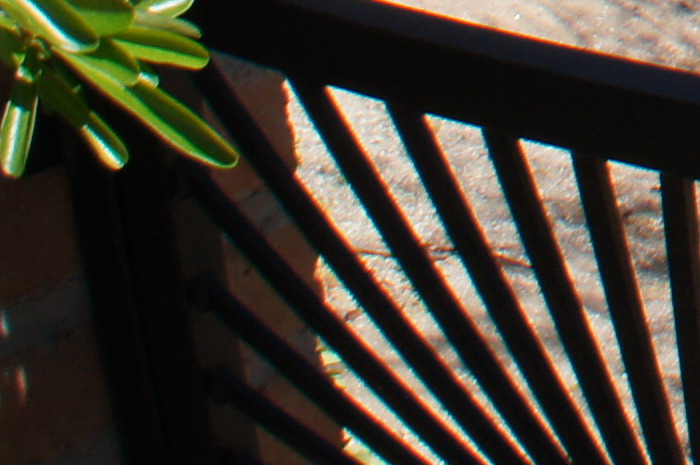 |
| Strong color fringing, F/11 |
This 100% crop comes from the bottom left of the image, taken at F/11. Magenta or red is very noticeable, but I also see plenty of cyan on the opposite.
Conclusion
The Sony VCL-ECF2 is a cool little add-on lens for people wanting a fisheye experience using the Sony NEX system. While this converter is not an optical masterpiece, it actually works well, and can be very fun if you know how to use it. It’s not for ‘getting it all in’ in a general sense, so don’t use it simply as you would a wide angle lens. |




















